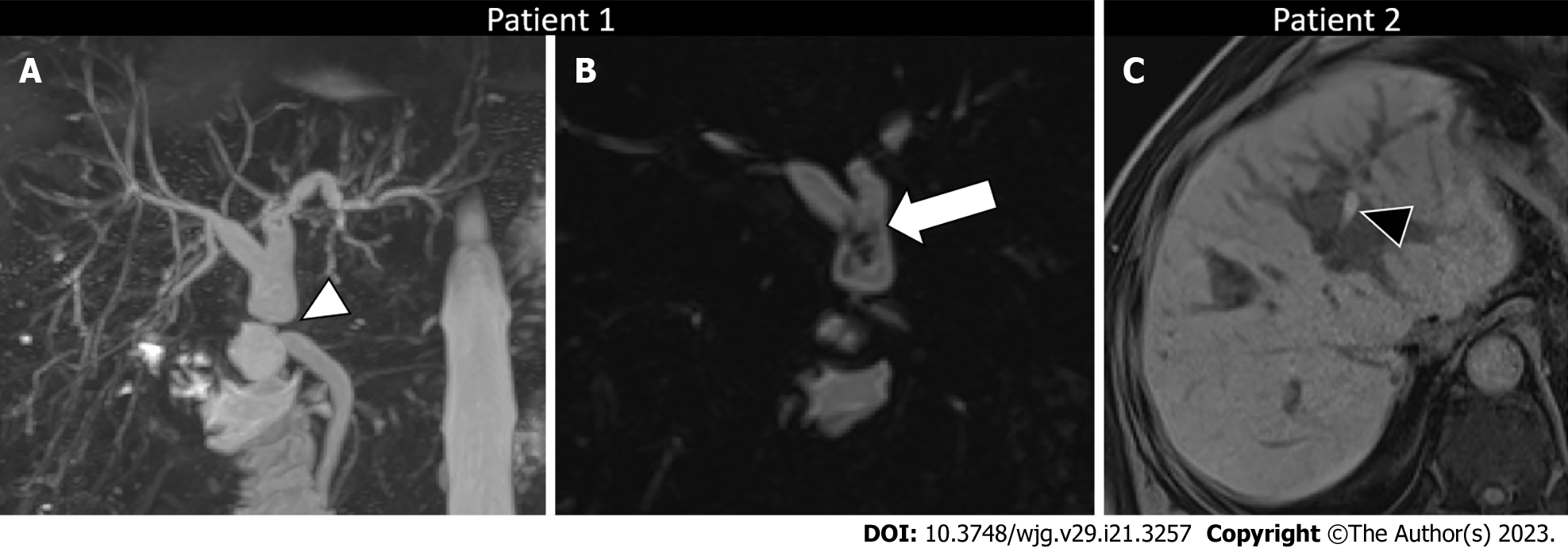Copyright
©The Author(s) 2023.
World J Gastroenterol. Jun 7, 2023; 29(21): 3257-3268
Published online Jun 7, 2023. doi: 10.3748/wjg.v29.i21.3257
Published online Jun 7, 2023. doi: 10.3748/wjg.v29.i21.3257
Figure 8 Biliary sludge and biliary cast.
A: Patient with biliary sludge and anastomotic stricture 3 mo after liver re-transplantation. Magnetic resonance cholangiopancreatography (MRCP) maximum intensity projection image demonstrates anastomotic biliary stricture (arrowhead) with marked upstream biliary dilatation; B: Three-dimensional MRCP in the coronal plane in the same patient demonstrates biliary sludge (arrow) in the dilated hepatic duct extending into the left and right ducts. C: Patient with biliary cast 2 y after liver transplantation. Unenhanced T1-weighted gradient-recalled image shows hyperintense content (arrowhead) in the left biliary duct, consistent with biliary cast.
- Citation: Vernuccio F, Mercante I, Tong XX, Crimì F, Cillo U, Quaia E. Biliary complications after liver transplantation: A computed tomography and magnetic resonance imaging pictorial review. World J Gastroenterol 2023; 29(21): 3257-3268
- URL: https://www.wjgnet.com/1007-9327/full/v29/i21/3257.htm
- DOI: https://dx.doi.org/10.3748/wjg.v29.i21.3257









